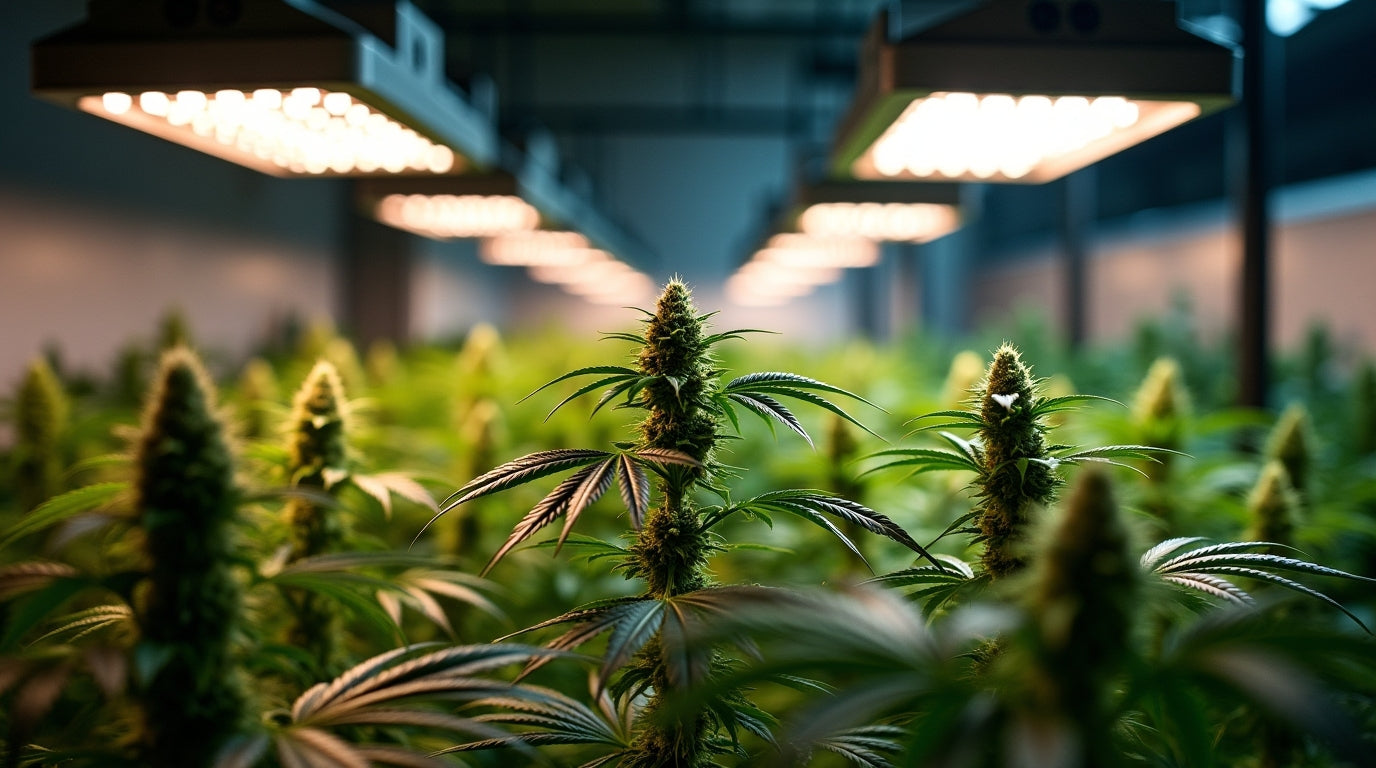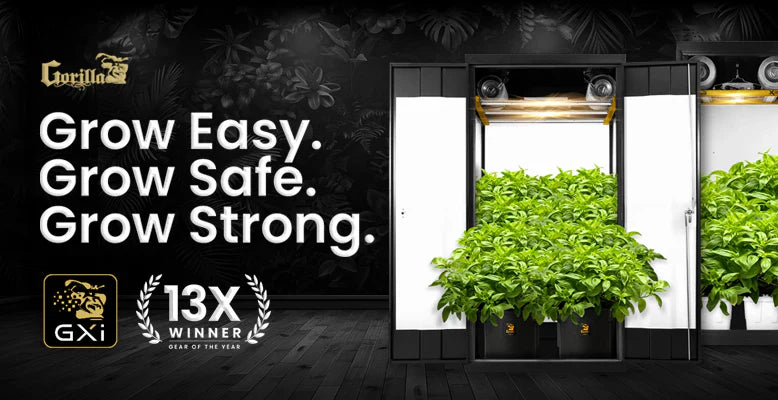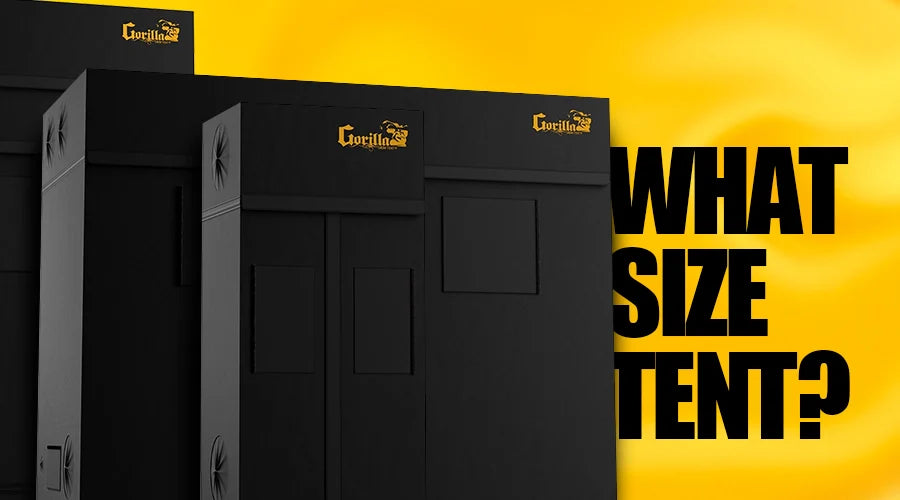
Complete Grow Tent Setup Guide 2025: Your Blueprint for Indoor Growing Success
Setting up a grow tent properly is the foundation of successful indoor gardening. Whether you're a beginner starting your first indoor grow or an experienced cultivator upgrading your setup, this complete grow tent setup guide 2025 will walk you through every step needed to create the perfect growing environment for your plants.
Quick Answer: A complete grow tent setup requires choosing the right tent size, installing proper lighting (LED recommended), setting up ventilation with intake and exhaust fans, maintaining ideal temperature (65-75°F) and humidity (40-60%), and organizing your growing medium and nutrients. Quality equipment like Gorilla Grow Tents ensures durability and optimal growing conditions.
Why Your Grow Tent Setup Matters More Than Ever in 2025
Indoor growing has evolved significantly, with 2025 bringing advanced technology and improved equipment that makes successful cultivation more accessible than ever. A properly configured grow tent setup controls every environmental factor that affects plant health: light, temperature, humidity, airflow, and CO2 levels.
Modern grow tent systems offer several key advantages over traditional growing methods. They provide complete environmental control, protection from pests and contaminants, energy efficiency through reflective interiors, and the ability to grow year-round regardless of outdoor conditions.

Essential Equipment for Your Complete Grow Tent Setup
Choosing the Perfect Grow Tent
The foundation of your setup starts with selecting the right grow tent. Gorilla Grow Tents lead the industry with their 1680D thick canvas construction—up to 9 times stronger than standard tents—and patented height extension capabilities.
Size considerations for different growing goals:
- 2x2 feet: Perfect for 1-2 plants or personal cultivation
- 3x3 feet: Ideal for 3-4 medium plants
- 4x4 feet: Best for 4-6 larger plants or commercial growing
- 5x5 feet and larger: Commercial operations or maximum yield setups
Advanced Lighting Systems for 2025
LED technology has revolutionized grow lighting, offering full-spectrum coverage with minimal heat generation. Modern LED grow lights provide 30-40% better efficiency compared to traditional HID systems while lasting significantly longer.
Key lighting specifications for optimal plant growth:
- PPFD requirements: 400-600 μmol/m²/s for vegetative growth, 600-1000 μmol/m²/s for flowering
- Light spectrum: Full spectrum with emphasis on blue (400-500nm) for vegetative growth and red (600-700nm) for flowering
- Coverage area: Ensure even light distribution across your entire canopy
Ventilation: The Heart of Environmental Control
Proper airflow prevents mold, controls temperature, and ensures healthy plant development. Your ventilation system should completely exchange the air in your tent every 1-3 minutes.
Essential ventilation components:
- Exhaust fan: Removes hot, humid air from the top of your tent
- Intake fan or passive vents: Brings fresh air into the bottom
- Oscillating fans: Provide air circulation around plants
- Carbon filter: Controls odors and purifies exhaust air
For tents experiencing wall collapse from high-CFM fans, Gorilla's High CFM Kits provide structural support to maintain tent shape and maximize growing space.
Step-by-Step Grow Tent Setup Process
Phase 1: Location and Assembly
Choose a location with access to electrical outlets, adequate space for equipment, and stable temperatures. Basements, spare rooms, and closets work well for most setups.
Assembly steps for optimal results:
- Clear your workspace: Ensure 3 feet of clearance on all sides during assembly
- Assemble the frame: Follow manufacturer instructions carefully, ensuring all joints lock securely
- Install the canvas: Work systematically around the frame, ensuring tight, even coverage
- Check for light leaks: Inspect all seams and zippers in darkness
- Install flooring: Place waterproof flooring to protect surfaces
Phase 2: Equipment Installation
Lighting Installation:
- Mount lights using adjustable hangers for height flexibility
- Position LED lights 18-24 inches above plants initially
- Ensure even coverage across the entire growing area
- Connect to timers for consistent light cycles
Ventilation Setup:
- Install exhaust fan near the tent's top
- Position intake vents or fans at the bottom
- Connect ducting with minimal bends for optimal airflow
- Install carbon filters if odor control is needed
Environmental Monitoring:
- Place thermometer/hygrometer at canopy level
- Install additional sensors for comprehensive monitoring
- Consider smart controllers for automated environmental management
Phase 3: Growing Medium and Plant Setup
Choose your growing medium based on experience level and plant requirements:
- Soil: Most beginner-friendly, provides natural nutrients
- Coco coir: Excellent drainage and root development
- Hydroponic systems: Fastest growth but requires more monitoring
Optimizing Environmental Conditions
Temperature Management
Maintain optimal temperature ranges for different growth stages:
- Seedling stage: 70-75°F (21-24°C)
- Vegetative growth: 70-78°F (21-26°C)
- Flowering stage: 65-75°F (18-24°C)
Temperature control strategies include proper ventilation, light placement, and environmental controllers. Excessive heat can stress plants and reduce yields, while temperatures too low slow growth significantly.
Humidity Control for Maximum Plant Health
Relative humidity requirements change throughout the plant lifecycle:
- Seedlings: 65-70% RH for rapid root development
- Vegetative stage: 55-60% RH for healthy leaf growth
- Flowering stage: 40-50% RH to prevent mold and maximize resin production
Use humidifiers for increasing humidity and dehumidifiers or enhanced ventilation for reducing excess moisture. Proper humidity control prevents common issues like powdery mildew and bud rot.
Air Circulation and CO2 Management
Gentle air movement strengthens plant stems and prevents stagnant air pockets. Position oscillating fans to create airflow without directly blasting plants.
CO2 supplementation can increase yields by 15-30% when combined with adequate lighting and nutrients. Ambient CO2 levels around 400ppm are sufficient for most grows, but supplementation to 800-1200ppm benefits advanced setups.
Advanced Setup Configurations
Complete Grow Tent Kits for Simplified Setup
For beginners or those wanting hassle-free setup, complete grow tent kits include all necessary components: tent, lighting, ventilation, timers, and often nutrients. These kits ensure component compatibility and eliminate guesswork in equipment selection.
Automation and Smart Growing Systems
2025 brings exciting automation options that simplify grow tent management:
- Smart environmental controllers: Automatically adjust temperature, humidity, and ventilation
- Automated watering systems: Maintain consistent moisture levels
- Light timing controllers: Optimize photoperiods for different growth stages
- Mobile monitoring apps: Check conditions remotely and receive alerts
Specialized Setups for Different Plants
Different plants require tailored approaches:
- Cannabis cultivation: Requires precise light cycles, strong odor control, and optimal environmental conditions
- Vegetable growing: Benefits from continuous harvest setups and succession planting
- Herb gardens: Thrive in smaller spaces with consistent environmental conditions
- Mushroom cultivation: Requires high humidity and specific air exchange rates

Common Setup Mistakes and How to Avoid Them
Ventilation Errors
Insufficient air exchange leads to heat buildup, high humidity, and poor plant health. Calculate your tent volume and ensure your exhaust fan moves that volume every 1-3 minutes. Don't forget to account for carbon filter and ducting restrictions that reduce fan efficiency.
Lighting Problems
Common lighting mistakes include inadequate coverage, incorrect height placement, and poor light spectrum selection. Invest in quality full-spectrum LEDs and use light meters to ensure even PPFD distribution across your canopy.
Environmental Monitoring Oversights
Placing monitors in wrong locations gives inaccurate readings. Position sensors at plant canopy level, not near lights or vents. Multiple sensors provide better accuracy for larger tents.
Maintenance and Troubleshooting
Regular Maintenance Schedule
Weekly tasks:
- Check and clean air filters
- Monitor plant health and environmental conditions
- Adjust light height as plants grow
- Inspect equipment for proper operation
Monthly tasks:
- Deep clean tent interior
- Calibrate environmental sensors
- Check and tighten all connections
- Replace worn components
Troubleshooting Common Issues
Temperature fluctuations: Check ventilation airflow, light positioning, and ambient room conditions. Add intake fans or adjust exhaust timing if needed.
Humidity problems: Verify proper air exchange rates and consider adding humidification or dehumidification equipment based on needs.
Light burn symptoms: Increase distance between lights and plants, or reduce light intensity during hot periods.
Poor plant growth: Evaluate all environmental factors systematically: light intensity, temperature, humidity, airflow, nutrients, and pH levels.
Cost-Effective Setup Strategies
Budget-Friendly Equipment Options
Start with essential components and upgrade over time. Prioritize tent quality and basic lighting, then add advanced features as your experience and budget allow.
Energy Efficiency Considerations
LED lights and efficient fans significantly reduce operational costs. Calculate long-term energy savings when choosing equipment—higher upfront costs often result in substantial savings over time.
Scaling Your Operation
Design your initial setup with expansion in mind. Gorilla's extension kits allow height adjustments, and modular equipment facilitates easy upgrades.
Frequently Asked Questions
What size grow tent do I need for my first setup?
For beginners, a 3x3 or 4x4 tent provides enough space for 4-6 plants while remaining manageable. Consider your available space, budget, and growing goals when selecting size.
How much does a complete grow tent setup cost in 2025?
A quality complete setup ranges from $500-1500 for small personal grows, up to $3000+ for larger commercial operations. Gorilla Grow Tent kits offer excellent value with professional-grade components.
Do I need special electrical work for my grow tent?
Most setups work with standard household outlets, but larger operations may require dedicated circuits. Always follow electrical safety guidelines and consult professionals for high-power installations.
How often should I replace grow tent equipment?
Quality tents last 5-10 years with proper care. LED lights typically last 50,000+ hours (5-7 years of continuous use). Replace filters and fans every 2-3 years depending on usage.
Can I grow different plants in the same tent?
Yes, but plants with similar environmental requirements work best together. Consider light needs, growth rates, and harvest timing when planning mixed grows.
Summary
Setting up a complete grow tent system requires careful planning, quality equipment, and attention to environmental details. Focus on choosing a durable tent, efficient lighting, proper ventilation, and reliable monitoring systems. Gorilla Grow Tents provide the foundation for successful indoor growing with their superior construction and innovative features. Start with essential components and upgrade systematically as your experience grows.
Ready to Start Your Indoor Growing Journey?
Transform your indoor gardening dreams into reality with a professional-grade grow tent setup. Browse Gorilla's complete selection of grow tents, kits, and accessories to find the perfect solution for your growing needs. Whether you're starting small or planning a large operation, Gorilla's industry-leading quality and comprehensive support ensure your growing success from day one.
Related Articles:

Lena Myles
I'm a mushroom enthusiast and home cook based in Oregon. I'm passionate about foraging and creating fungi-focused recipes, especially delicious, plant-based dishes using gourmet mushrooms like trumpet, shiitake, and oyster. When I’m not in the kitchen, you’ll usually find me wandering the woods in search of new wild flavors.


